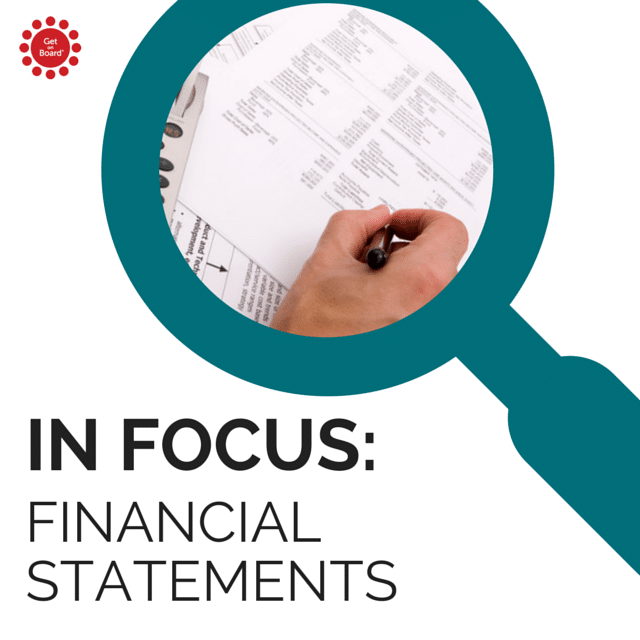In Focus: Financial Statements

Knowing how to read and understand financial statements is one of the most important responsibilities of a company director. It is not something that you can outsource to the treasurer or accountant, and you cannot leave it to chance that they haven’t missed anything important or, in the worst case, are being dishonest in their activity and reporting.
If you’re like me you don’t have a natural ‘knack’ for numbers and you can use some extra guidance around interpreting and understanding an organisation’s financial reports. This month’s In Focus segment has been prepared with you in mind and takes a deep-dive on each of the main financial statements that you should receive at each board meeting.
Cash Flow Statement
This learning module from Small Biz Connect gives you an overview of cash flow – the measure of money flowing in and out of your business at any given time. It provides you with templates for preparing a cash flow statement and a cash flow forecast (a vital tool that enables you to predict peaks and troughs in your cash balance). View the module here.
Statement of Financial Position
Also known as the Balance Sheet, the Statement of Financial Position presents a company’s financial position at the end of a specified date. This guide (here) will give you a comprehensive overview of the balance sheet’s elements, how it is prepared, and the considerations you need to make based on the underlying accounting approach and principles utilised by the organisation preparing the statement. If you’re looking for a quick overview, check out this short video.
Income Statement
This statement is also referred to as the Profit and Loss Statement (or simply, P&L). It provides a summary of the financial performance of a business over time (monthly, quarterly or annually). The Western Australian Small Business Development Corporation has put together this in-depth overview of Profit and Loss Statements complete with ratio analysis and a sample P&L statement (view article here). For further understanding, this article (here) by Inc. gives you information on analysing the Income Statement.
Statement of Changes in Equity
This report presents a summary of the changes in shareholders’ equity accounts over the reporting period. This article (here) looks at the components of this report and the types of business activity that create a change in shareholders’ equity. This article here provides further information on the Statement of Changes in Equity.
If you’re looking for some information around analysing the information within financial statements to allow you to effectively manage and make informed decisions this guide by NAB, this guide from Westpac, and this article from AMEX Open Forum will give you loads of information around a neat little thing called ratio analysis. This is vital information for all types of businesses, from publicly listed companies to not-for-profit organisations.
